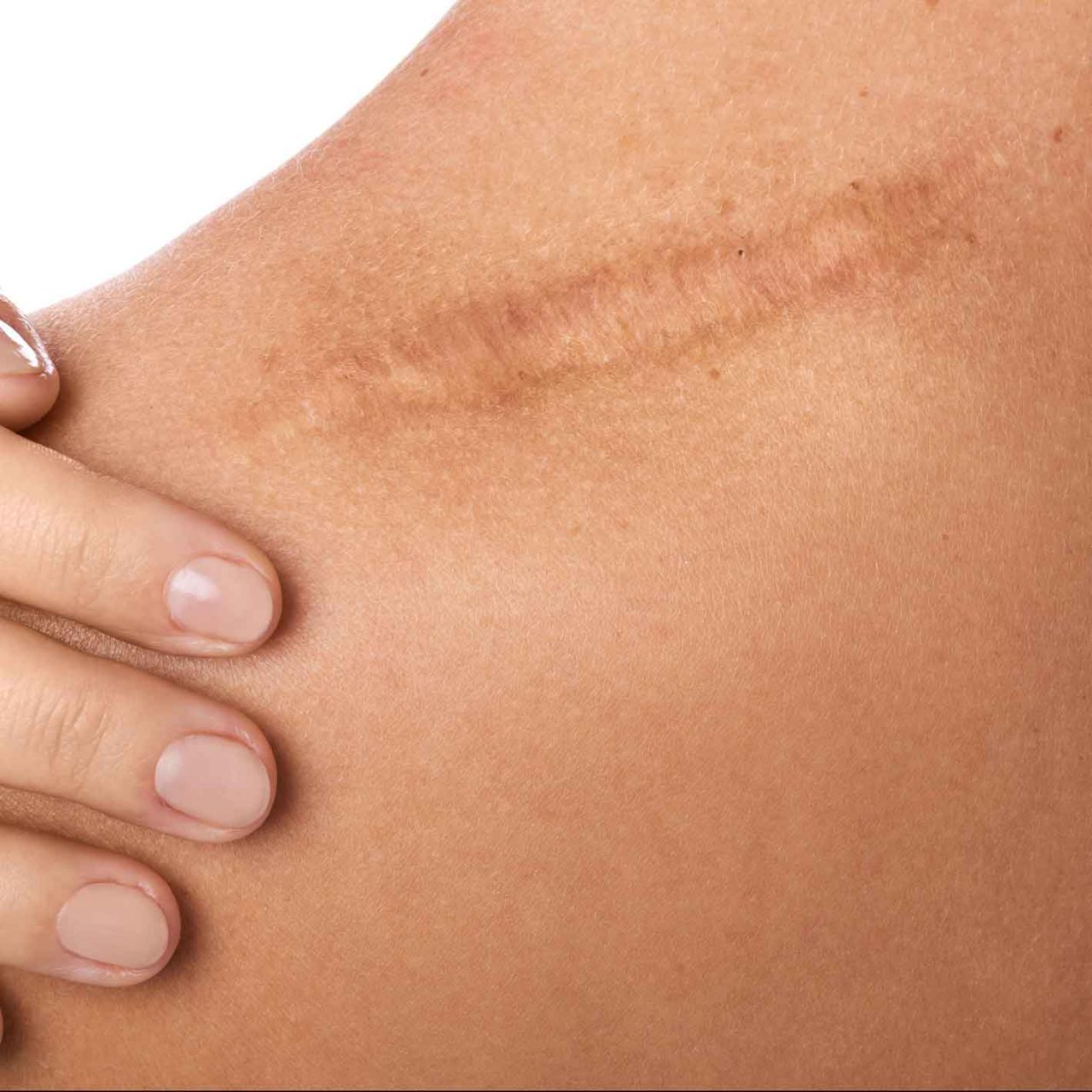Keloid and Hypertrophic Scars
Heard about keloid or hypertrophic scars, but wonder what actually causes them? Here, Dr. Klibanoff explains what they are and possible treatments.
Heard about keloid or hypertrophic scars, but wonder what actually causes them? Here, Dr. Klibanoff explains what they are and possible treatments.
As successful as orthopedic surgical procedures can be, sometimes complications can occur. One example is keloid scar formation, and more commonly, hypertrophic scar formation.
What is a keloid scar?
Keloids and hypertrophic scars are different entities but are similar in appearance. Essentially, these two conditions create thicker, uncomfortable, and potentially less mobile or “tight” scars. True keloid scars are more common in those with darker skin tones, those with Asian or Latin ancestry, women who are pregnant, and people younger than 30.1
Keloids are an overgrowth of scar tissue and extend beyond the margins of the wound. They can grow over long periods of time, may be lumpy, itchy, and can be irritated by clothing. These formations are not dangerous, but are usually unwanted.

While they’re more common on the earlobes, shoulders, cheeks, and chest above the sternum, they can form anywhere. When they do form on a larger area of the body, the hardened, tight scar tissue may restrict movement – this is particularly difficult if it forms on the scar from something like a total knee replacement surgery.
What is a hypertrophic scar?
A hypertrophic scar, in contrast, is a thickened, wide, often raised scar that develops where skin is injured. Scars form normally during the wound healing process, but a hypertrophic scar is a result of an abnormal response to the trauma of surgery. It never extends outside the area of involvement but can widen and thicken between the edges of the wound.
The overproduction of collagen, a component of scars, occurs when a wound is infected or inflamed, under a great deal of tension or motion (such as in surgery on a joint), or left to heal without stitches. Early intervention when wounds show early signs of inflammation may help to avoid hypertrophic scar formation.

Hypertrophic scars are much more common with surgery of the hip and knee, whereas in shoulder surgery, keloids may also form with some regularity.
Scar treatments
Aside from local discomfort and limited range of motion, the main reason to seek treatment is typically cosmetic.
For scars that are uncomfortable or visibly unacceptable to the patient, the first line of treatment is serial injections with steroid medication.2 This, done by a surgeon or dermatologist every 6 to 8 weeks, can lead to acceptable outcomes in both hypertrophic and keloid scars.
Both lasers and cryotherapy have also been used successfully.3-4 Laser is particularly useful early in scar formation and may delay or eliminate the discoloration.
Other medicinal types of injections also exist. All of these have some inherent risks of their own and should be discussed with a physician. Talk to your surgeon before any surgery to discuss the length and extent of scarring that can occur with the type of incision and closure planned for your surgery.
Secondary treatments include revision and repeat resection of the scar. In this instance, the tendency to form thick scars is known by the surgeon so proactive methods are used. Tight, careful closure of the layers of the skin are undertaken. The wound may be injected with steroid at the time of closure to reduce the stimulation of some of the elements that overproduce with keloid. Topically, silicon adhesive sheets can be applied to reduce the forces across the wound edges – again hoping to reduce the stimulus for thicker scar. Post surgically, injections can further reduce scar overproduction.
When it comes to discussing recovery from an orthopedic surgery, many doctors focus on the “big” risks like bleeding, blood clots, complications, or anesthesia and may not discuss these less obvious things. Though thickened scars, such as keloid and hypertrophic forms, can occur in up to 10% of people, they are not dangerous and do have treatments. If you, or someone in your family, forms these thicker scars, be sure to inform your healthcare team before surgery, as there are methods to use that decrease the risk of it happening.